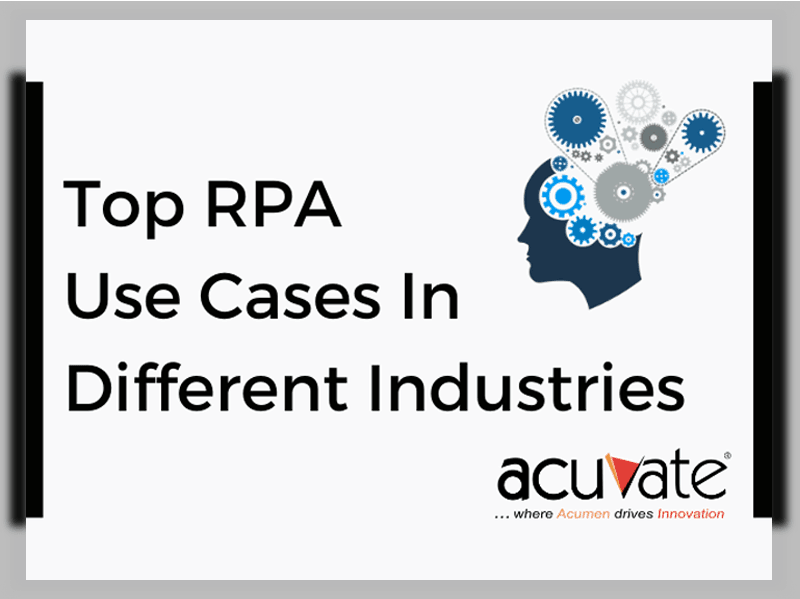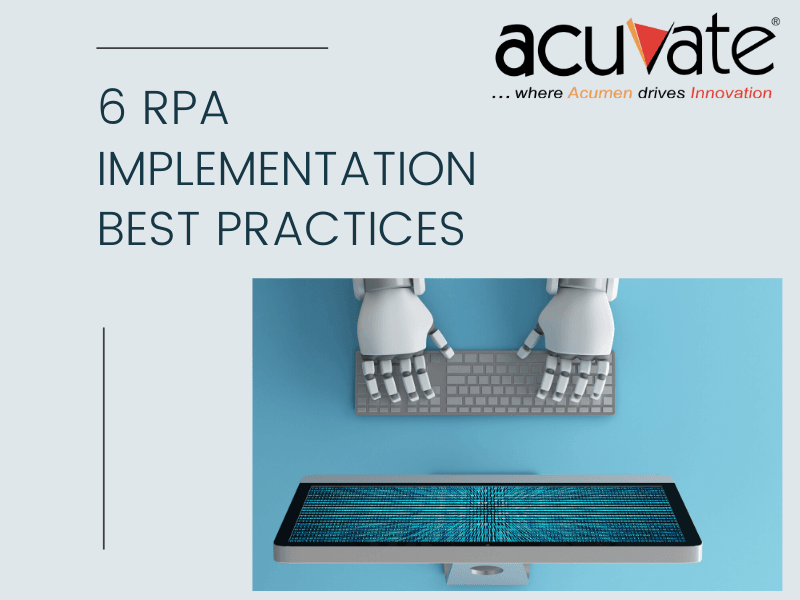Business Process Management (BPM) and Robotic Process Automation (RPA) have been an integral part of organizations’ digital transformation strategies as companies are continuously pushing the envelope to gain competitive advantage and optimize their business processes.
BPM, often known as Business Process Automation (BPA), is an approach to optimizing business processes in order to achieve maximum efficiency and value. BPM involves automating overall end-to-end process rather than individual tasks and is concerned in enabling agile decision making. BPM involves an in-depth evaluation of processes, identifying areas for improvement, and a ground up approach to building solutions to ensure a robust infrastructure to business processes.
RPA, on the other hand, is designed to automate individual tasks that are repetitive, rule-based and have been traditionally executed by humans. RPA demands fewer resources, is faster to implement and can be incorporated with the existing legacy technological environment.
While both RPA and BPM at the first sight seem distinct in their capabilities, they can complement each other and assist in implementing company-wide digital transformation seamlessly when leveraged appropriately. RPA and BPM cannot be deemed as conflicting strategies as both have the common goal with different approaches to achieve it. While RPA is technology-focused, BPM is more of a discipline. This article elicits the difference between BPM and RPA.
RPA Vs BPM: Key Differences
| RPA | BPM | |
| Technology | RPA is used to configure bots that can execute repetitive tasks that are time-consuming and low in complexity. RPA allows employees to focus on more complex tasks. | BPM identifies bottlenecks and streamlines business processes to obtain shorter cycle-times. |
| Function | Creates software bots for low-skill repetitive tasks in finance, HR, IT, and admin. | BPM is used for environments with different designs for overall process orchestration and continual improvement. BPM aims to automate a narrow range of processes such as customer onboarding, invoice processing, and claims management. |
| Implementation | Implementing RPA doesn’t demand huge efforts as RPA tools can seamlessly work across the organization’s existing technological environment. | BPM requires comparatively higher efforts as it involves significant transformation of business processes in the organization. |
| Robotics Quotient | RPA requires a higher Robotic Quotient (RQ). | BPM in contrast requires a low degree of RQ to engage with it. |
| ROI | Returns with RPA can be immediately realized despite limited scope of RPA implementations. | BPM is a long-term strategy that offers high returns on a larger time frame as it leads to higher efficiency, cost reduction, agility, productivity, and compliance. |
| Governance and Audit | RPA has a significant degree of transparency and verification to ensure efficient working of systems. | BPM, is more difficult to govern and audit, due to its sophisticated rules management and usage of predictive analytics |
| Objectives | RPA aims at minimizing the human involvement in manual, repetitive, and rule-based tasks that are low in complexity in terms of decision making and reasoning. | BPM is leveraged to restructure or modify business processes to improve enterprise-wide efficiency and productivity. |
| Human Interaction | RPA requires minimal human interaction as it works by controlling desktop and web applications. | Human interaction in BPM may be limited to custom forms required to collect data from humans. |
When To Use BPM
BPA provides an organisation-wide holistic view on processes that can be improved through automation and not just limited to individual tasks. BPA is used to automate complete end-to-end processes or workflows through the following ways:
- Identifying all the administrative tasks involved in the process
- Analyzing the entire workflows
- Identifying specific areas where workflows can be optimized and improve efficiency
When To Use RPA
Robotic process automation, unlike business process automation which attempts to automate an entire workflow, is a task-specific automation to eliminate an existing repetitive activity or co-exist within current processes to perform them more efficiently.
RPA is sought after when organizations run on several legacy systems which are very expensive to replace. These systems also cause huge integration challenges. In such scenarios, RPA can be used to solve integration challenges and automate specific processes without any major disruption.
On the whole, RPA can automate specific tasks while BPM is a discipline that can help streamline complete workflows and multiple processes to reduce chances of manual errors and improve overall efficiency.
Conclusion
BPM and RPM aren’t conflicting approaches but are in fact complementing approaches that aim to increase productivity and efficiency with different implementation strategies.
RPA can be used to achieve greater gains when used along with BPM. BPM is a better suited tool to transform an entire process rather than correcting a particular activity in the process. However, if the enterprise cannot or doesn’t have such a requirement to automate an entire process from bottom-up, RPA can be a befitting solution.
Several organizations today are unable to work effectively and innovate rapidly due to complex business processes and legacy systems. Such businesses can look into combining RPA and BPM to build modern business workflows while avoiding complex and expensive integration projects.
By combining UI Flows with Power Automate, Microsoft has recently added RPA capabilities to their BPM platform. The integration brings API and UI-based automation together in a single platform that covers both modern and legacy applications – whether on-premise or in the cloud. You can create intelligent workflows by recording step-by-step actions like mouse clicks, keyboard strokes, and data entry and then replaying those actions.
If you’d like to learn more about this topic, please feel free to get in touch with one of our RPA experts for a personalized consultation. You may also be interested in checking out our RPA implementation services and solutions.



